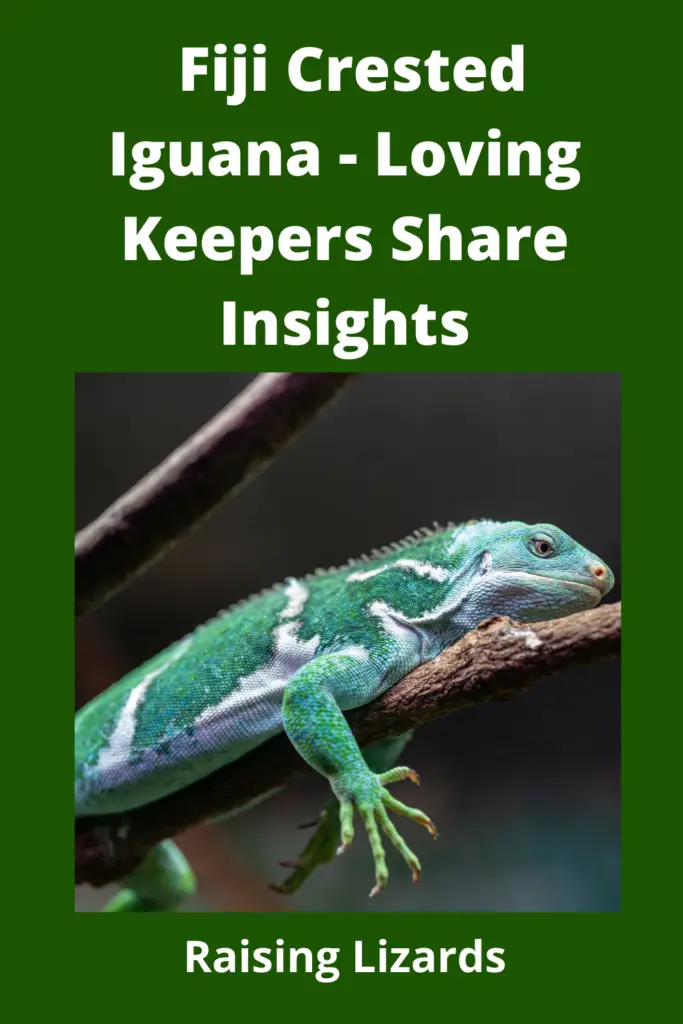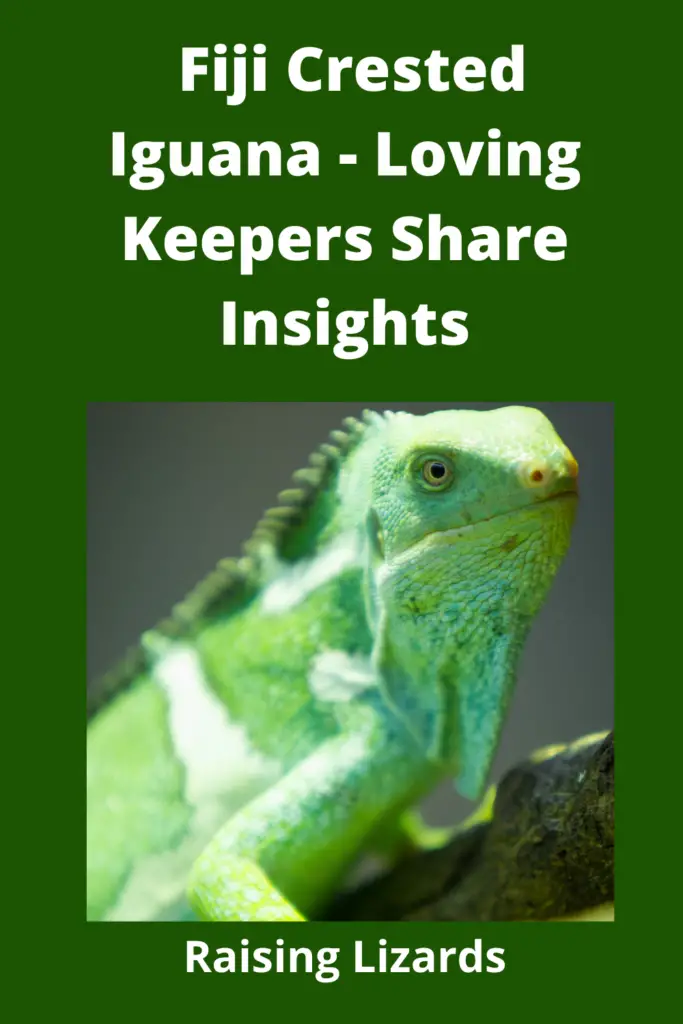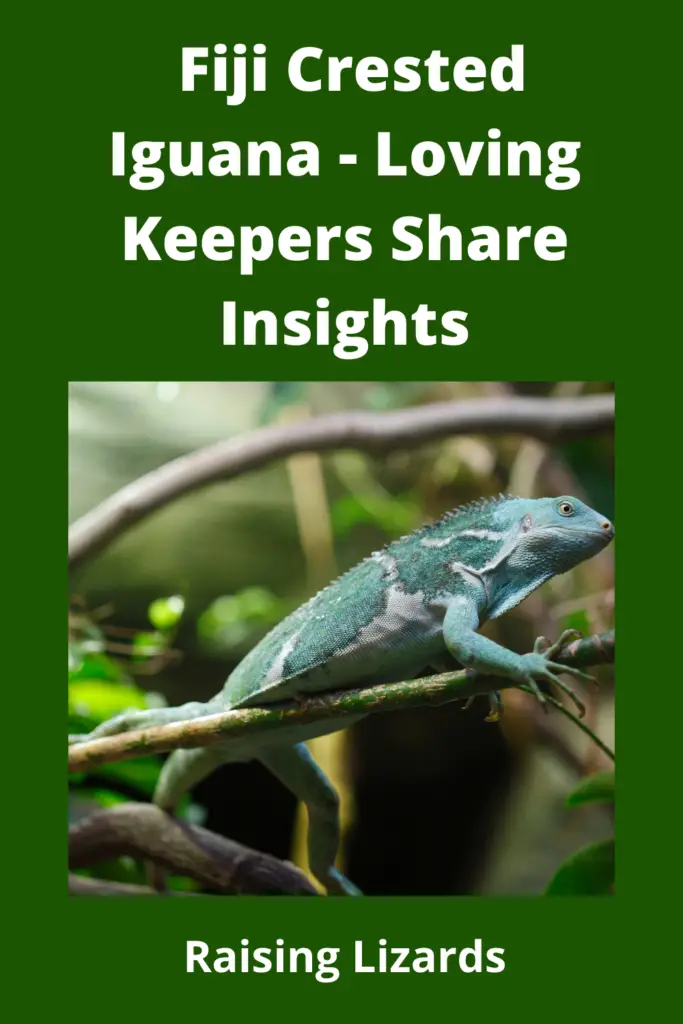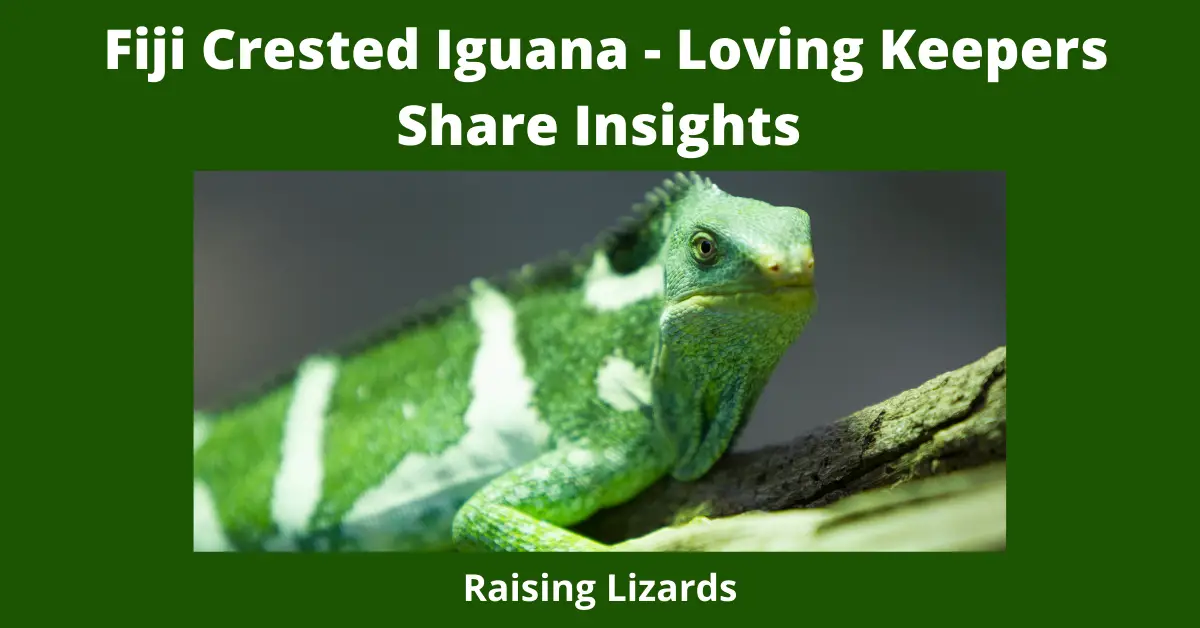Fiji Crested Iguana – Loving Keepers Share Insights
For most who don’t live in Fiji, the crested iguana is a rare sight. This colorful lizard is only found on the islands of Fiji and Tonga. There are two subspecies of crested iguana: one that lives on Viti Levu, the largest island in Fiji, and another that inhabits Taveuni Island. The lizards have bright colors to warn predators away from them with their bright orange skin and yellow crest atop their heads. They also use this coloration for mating displays – males will flash their vivid colors during the breeding season to attract females! Jump to 7 Reasons to Have a Pet Iguana
Description of Fiji Crested Iguana
These iguanas reach a length of 75cm ( 30 inches ) and have white stripes with black edges. Their crests, which span the length of their backs, are evident from hatching. The crest’s spines may reach a length of 1.5cm (3/4″) each. They are excellent climbers because of their long, powerful claws.
Who brought Fiji-banded iguanas to the US?
Crutchfield was found guilty in 1986 of conspiring to smuggle four Fiji banded iguanas into the United States for the first time through a co-conspirator, Anson Wong, who worked out of Penang, Malaysia.

How big do crested iguanas get?
Crested iguanas can grow up to 75cm ( 30 inches ) long. Their crests, which span the length of their backs, are evident from hatching. The crest’s spines may reach a length of 1.5cm each.
What is the Lifespan of Crested Iguana?
The species has a life span of between 12 to 15 years.
Are Fiji iguanas good pets?
Yes, Fiji iguanas make the best pets as they are the easiest to manage. They are the most docile, and despite the fact that they are huge pets, they remain kind and timid.
How many Fiji banded iguanas are left?
The crested iguana is endemic to Fiji. They were formerly prevalent on all fourteen Fijian islands but are now confined to only three! Surprisingly, 98 percent of the surviving population (less than 6,000) live on a single island.
Why are Fiji banded iguanas illegal?
Because they’re on the verge of extinction, Fiji banded iguanas are unlawful and prohibited from international commerce due to their listing on CITES Appendix I.
Is the Fiji banded iguana endangered?
Yes, Fiji-banded iguana is declared endangered species.
How much do Fiji banded iguanas cost?
You can expect to pay a lot of money if you want to buy a Fiji Banded Iguana. They’re hard to come by online, and you’re unlikely to find one in your neighborhood pet store. As a result, one of these iguanas might cost as much as $1,000.
Diet and Environment – What do Fiji iguanas eat?
Fiji Iguanas are omnivorous, which means they can consume a wide variety of plants and insects. Iguanas may consume plants in the wild, though they usually do so to stay hydrated. The majority of their food would consist of tiny, easily digestible insects.
Several veterinarians recommend brown crickets for this species. They are highly nutritious, relatively easy to hunt for iguanas, generally accessible, and excellent value for money. If your iguana doesn’t eat them, black bugs and locusts make excellent substitutes. You might want to give your iguana a treat now and again, and you might do so by feeding waxworms, calciworms, cockroaches, mealworms, or beetle grubs. Because grubs and worms are extremely fattening, owners usually only feed them once or twice a week.

In addition, the iguana will devour a large amount of fresh foliage. Dandelion, watercress, clover, honeysuckle, curly kale leafy salads, Brussel tops, coriander, parsley, spring greens, rocket, carrot, courgette, parsnip, and bell peppers are all good sources of vitamin A. Leafy greens should make up the majority of the vegetation.
Fruit can be offered to the iguana occasionally; however, acidic fruits such as citrus, apples, and strawberries should be avoided in favor of banana, mango, or blueberries.
We shower the enclosure with room temperature water twice a day, once in the morning and once in the afternoon. We want to soak the absorbent decorations while spraying the enclosure, leaving a fine coating of water droplets on the ornaments and foliage. After each shower, the iguana should drink from its decorations.
A modest or medium-sized water bowl should always be included in the iguana’s enclosure. It’s unlikely that the iguana will drink from it, but it should be available as a backup. You may observe that the iguana uses it to bathe, which is generally to chill off or relax its shedding skin.
What is Poisonous to the Crested Iguana?
There are a few toxic plants that should be avoided at all costs. These plants aren’t edible, and they might be quite poisonous to the Iguanas. Rhubarb is the most poisonous plant to crested Iguanas. The production of calcium oxalate crystals makes it very poisonous. Contact your local veterinarian for additional information about hazardous plants.
Breeding and Reproduction
It’s possible that if you keep a male and a female together, they’ll reproduce. You don’t have to do anything to make this happen. It will happen spontaneously as long as they are fit and the conditions are favorable. Before introducing the pair, think about whether you want this to happen. If you incubate the eggs, what will you do with the babies?
A gravid female should be able to lay her eggs in a nesting box. The box should be spacious enough for her to spin around completely within. Use a soil mix that is moist enough to maintain its form but not so wet that it saturates any eggs within the nesting box.
The eggs should be fostered in an incubator at 84 degrees Fahrenheit after being deposited. To trap the humidity around the eggs, incubate them in sealed boxes on a moisture-rich substrate (such as Hatchrite). The eggs will start to hatch after around 160-170 days, and the first babies to emerge will stimulate the remainder of the eggs to hatch.
Housing Requirements
Fiji Iguanas are used to a tropical climate, so they have a hard time adjusting to the cold in the United States. To protect the iguana from this, veterinarians recommend keeping it in a decent quality wooden or glass vivarium. Due to the needed temperature gradient, pet parents usually choose an enclosure that is at least 4 x 2 x 3ft in size (Width x Length x Height).
The enclosure should, in theory, have plenty of vents on both the front and rear. All of this ventilation should prevent heat from escaping from one side of the cage to the other while maintaining a constant temperature in the basking zone.

Because Fiji iguanas are not shy, use this size enclosure for the youngsters or adults. To ensure that the iguana does not have too much free space, start with a lot more decorations and gradually remove them as the iguana develops.
Heating
Fiji iguanas, understandably, spend a lot of time sunbathing in the sun. As a result, they require a 95°F basking area during the day. Try to distribute the heat over a third of the cage while allowing the remainder to cool to 75 degrees on the other side. Attach a powerful basking lamp on one side of the enclosure’s roof to do this. This is protected by a guard and monitored by a high-temperature dimming thermostat, ensuring that the temperature remains consistent throughout the day. The basking lamp is left on for ten to twelve hours each day.
All of the lights should be turned off at night, and the enclosure should be entirely dark. This should ensure that the iguana’s day-night cycle is uninterrupted.
UVB (Ultraviolet) Light
Fiji iguanas are natural baskers; although they get some shade from the canopy and vegetation, thus they require a medium-intensity UVB source. Experts recommend a 6-10 percent UV tube that runs at least 2/3 of the cage’s length. In certain circumstances, owners may raise the lamp’s strength depending on the enclosure’s height; nevertheless, in a standard 3ft tall vivarium, 10% should be enough.
Temperament & Typical Behavior
The iguanas are diurnal, meaning they are active during the day. They hunt for food on the jungle floor during the day and ascend to the trees at night to avoid predators. In addition to climbing plants, the Fiji Banded Iguana is also an excellent swimmer.
Banded Fiji Iguanas are significantly smaller than other famous iguanas for sale at pet stores, making them much simpler to handle. You can educate your iguana to be comfortable being handled by you with some training. Don’t catch your iguana off guard or chase it down to catch it; instead, feed it some food and wait for it to come to you. It can take some time for your iguana to warm up to you, but once it does, picking it up should be simple.

Health Care Issues
Metabolic bone disease, infectious stomatitis (mouth rot), parasites, respiratory illness, salmonellosis, and hypervitaminosis D are all common ailments found in Fiji iguanas.
Final Thoughts
The crested iguana is an uncommon sight for most people who do not reside in Fiji. Only the islands of Fiji and Tonga are home to this beautiful lizard. With their glowing orange skin and yellow crest atop their heads, the lizards use their bright colors to scare predators away. They also employ similar coloring for mating displays, with males flashing their bright hues to attract females during the breeding season.


